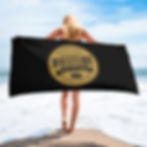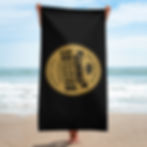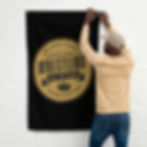Yusuf Ismail: The Terrible Turk
by Jimmy Wheeler, with research and help from Phil Lions

Yousouf Ishmaelo, or Ismail, or many other variations of that name, is affectionately known today as Koca Yusuf (the Great Yusuf). It is thought he was born in 1857, but could be up to a decade later, under the rule of the Ottoman Empire. Much of his early life is shrouded by lore and fable. In the history books, Yusuf is remembered as one of the most heralded Kirkpinar wrestlers ever.
When we talk about someone who transcended wrestling, the chances are that the same names are going to come up every time. Ismail is not one of them. He should be. To work out what is fact and what is fiction about his life is a task in itself. In Turkey especially, Ismail is almost like a mythical figure, held on the highest of high pedestals. Thus, causing his story to be often exaggerated.
Legend has it he started wrestling as a ‘hairless boy’. Oil wrestling was the style of the Ottoman Empire. It was in that style Yusuf competed in the legendary Kirkpinar tournament, which has been held since the 1300s. He met the master of the style, Alico, in the competition and the torch was passed from the veteran to the young man. Alico declared, “This field is yours from now on. I would quit wrestling without any concern after seeing a pehlivan like you. The prize and the title of head wrestler is yours. Take both of them happily. Son, you deserved both of them.”
There are claims Yusuf toured Europe, Japan, northern Africa and other places in 1894, but no verification has ever been found to say that's anymore than ballyhoo. What we do know is in 1895 Jean/Joseph Doublier and Nicolai Petroff traveled to Turkey together. There they met Yusuf, Nourlah (Ali Nurullah Hasan) and Mehmed. The five men traveled to Paris, France. It was there Yusuf made a huge name for himself.
As there would be when he traveled to America, much hoopla was put out in the press around the arrival of the Turks in Paris. Stuff like Yusuf was unbeaten, and the Sultan, Abdul Hamid II, had sent the Turks out to conquer the world. If they did lose and then returned to the Empire, they were said to be facing the death penalty. They first appeared in March 1895. Around a month later he became the first known wrestler to use the moniker ‘The Terrible Turk’. Yusuf's three month run led to three matches with Paul Pons. Two draws, and the third result is currently unknown. Pons was the biggest star in France.
The Turks left in May and returned to Paris in November 1895. This time it was Kara Osman joining Yusuf and Nourlah, not Mehmed. It was this run that cemented Yusuf's legacy on the French wrestling scene. On December 4, 1895, Yusuf was involved in a match with a fellow Turk. At the conclusion, he jammed his fingers into the opponent’s nose and choked the man out. Eventually the police had to stop the whole proceedings to prevent a riot. This was huge news in Paris.
That was his last known match in Paris. He did wrestle in a few smaller cities and towns during January 1896 and about a year later. Yusuf had
left his mark though in such a short amount of time. Pons himself stated the Turks were responsible for the revival of pro wrestling in Paris. A bold statement by one of the biggest names ever in French professional wrestling.
Other than those stints in France, no other results have ever been found for Yusuf in Europe, Africa nor Asia. It's possible he may have wrestled elsewhere, but the general thinking is he

returned home to the Ottoman Empire in-between tours of France to train the next generation of oil wrestlers.
Yusuf arrived in America on February 19, 1898. His name was everywhere in the newspapers talking about what might have happened if he met Ernest Roeber or ‘Strangler’ Evan Lewis. He was being called a savage. Much like the lasting impression of him left in Paris. He was accompanied to New York by Antonio Pierri and Monsieur Doublier.
After a month and a half of newspaper coverage, Ernest Roeber and Yusuf met on March 26, 1898 at Madison Square Garden. Thousands were in attendance that night to see the World Graeco-Roman Championship match. The match was a disaster. Controversy erupted in the arena. After only one minute and fifty seconds of bell time, the match was over. Some papers claimed Roeber ran away from Yusuf and in the process fell or jumped off the staging area. Others insisted Yusuf maliciously pushed Roeber off the stage. Either way Roeber was awarded the victory via disqualification.
The two men met again on April 30, 1898, at the Metropolitan Opera House in front of considerably less fans. The whole thing was physical and broke down into a melee involving wrestlers, managers, audience members and the police. The match was declared a no-contest. From there, Yusuf toured North America taking on all comers.

On June 20, 1898, Yusuf took part in the last big match of his life. He wrestled against ‘Strangler’ Evan Lewis for the World Catch-as-Catch-Can Championship. He was disqualified from the title match, but the two men wrestled immediately after with nothing on the line. Lewis ended up forfeiting the bout stating, “He is too powerful for me”. Thousands of people were present. One of which was Jack Curley, who grew up to become one of the most important wrestling promoters in all of America. He recalled the Turk swinging Lewis around by his ankle until he made a merry-go-round only dropping Lewis when he saw fit; it left him dizzy for two weeks apparently.
On July 4, 1898, he was traveling home on the La Bourgogne steamer when it collided with another boat. Upon impact all the passengers were
awoken by the crash and reportedly mayhem broke out with people fighting to get off the sinking ship and the crew of the vessel totally ignoring any duties to help the passengers, instead they got themselves lifeboats to escape and attacked those trying to join them with oars, boat hooks, and their fists if no weapons were available preventing them from being saved.
Only 163 of the 725 passengers survived. As for Ismail the story goes that he had earned the amount of $8,000 ($250,000 plus in today's money) during his time in America and insisted only being paid in gold, which he always carried in a money belt around his waist. It is said he strapped it on when he realized the ship was sinking and jumped overboard figuring he could just swim to one of the lifeboats, however, with the weight of the gold around his waist he simply sank to the bottom to the ocean with his fortune still attached to him. Whether that story is true or not we will never know. It is actually told to children as a kind of fable, to explain the perils of greed.
A second tour had been rumored for later that year. Instead, another Turk, a pupil of Yusuf's, traveled to America and the legend of ‘The Terrible Turk’ lived on. He was not the first wrestler to have a reputation as a rough wrestler, or even a foreign rough wrestler, but he did reach heights no-one else had by living up to the terrible name. The foreign menace became a staple of pro wrestling for a hundred years and it can all be traced back to Koca Yusuf. He is a folk hero in Turkey and a legend to professional wrestling.
If you enjoyed this article, checkout the rest of the Class of 2021 inductee pages and order your copy of the limited-edition commemorative magazine by visiting the International Professional Wrestling Hall of Fame Shop or by clicking here.



























